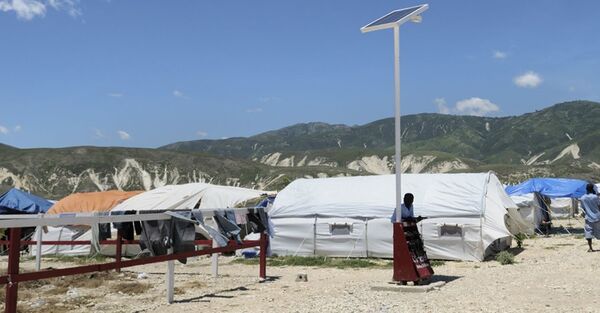Click here to register!
Difference between revisions of "Webinar on Energy Efficiency in Humanitarian Organization Infrastructure: Case Study from Kenya and Ethiopia"
From energypedia
***** (***** | *****) m |
***** (***** | *****) m Tag: 2017 source edit |
||
| Line 1: | Line 1: | ||
| − | [[File:Sustainable_Operation_and_Maintenance_in_SUN_ESDS_Displacement_Settings.jpg|alt=|border|right|600x600px]] | + | [[File:Sustainable_Operation_and_Maintenance_in_SUN_ESDS_Displacement_Settings.jpg|alt=|border|right|600x600px]]Energy efficiency (EE) is the “low hanging fruit” which is often ignored or not utilized to the fullest. However, EE interventions should be the first step towards transition to clean energy with many low or no-cost interventions that can easily be implemented resulting in both energy and financial savings. |
| − | Energy efficiency (EE) is the “low hanging fruit” which is often ignored or not utilized to the fullest. However, EE interventions should be the first step towards transition to clean energy with many low or no-cost interventions that can easily be implemented resulting in both energy and financial savings. | ||
This webinar will feature a presentation on the “Energy Efficiency Implementation Guidelines” which includes interventions and activities for improving EE across five primary areas i.e. power generation, power distribution, appliances, buildings and behavioural changes. Case study from Kenya will focus on good practices of incorporating energy efficiency in humanitarian infrastructures. | This webinar will feature a presentation on the “Energy Efficiency Implementation Guidelines” which includes interventions and activities for improving EE across five primary areas i.e. power generation, power distribution, appliances, buildings and behavioural changes. Case study from Kenya will focus on good practices of incorporating energy efficiency in humanitarian infrastructures. | ||
Revision as of 14:25, 4 March 2022
Energy efficiency (EE) is the “low hanging fruit” which is often ignored or not utilized to the fullest. However, EE interventions should be the first step towards transition to clean energy with many low or no-cost interventions that can easily be implemented resulting in both energy and financial savings.
This webinar will feature a presentation on the “Energy Efficiency Implementation Guidelines” which includes interventions and activities for improving EE across five primary areas i.e. power generation, power distribution, appliances, buildings and behavioural changes. Case study from Kenya will focus on good practices of incorporating energy efficiency in humanitarian infrastructures.




















